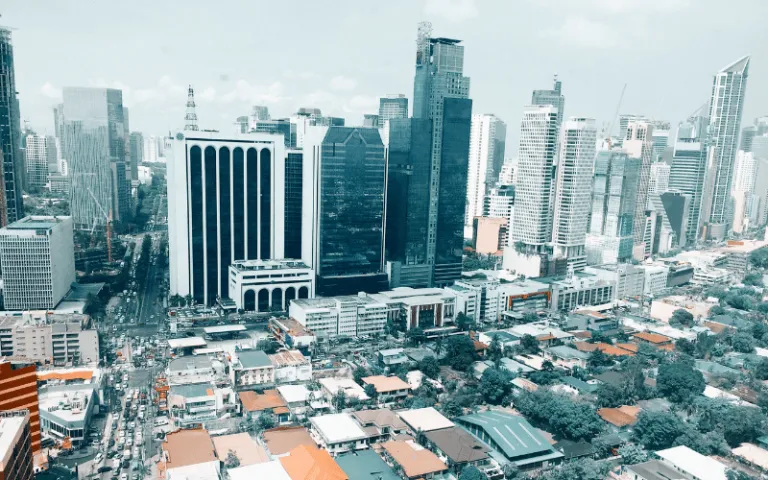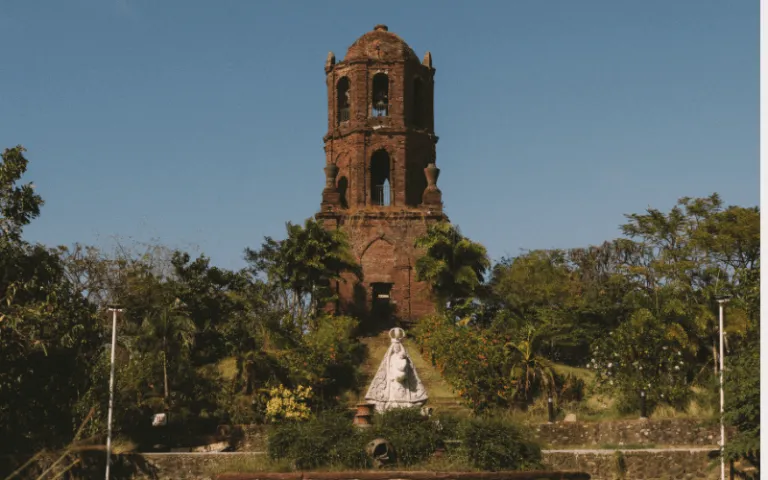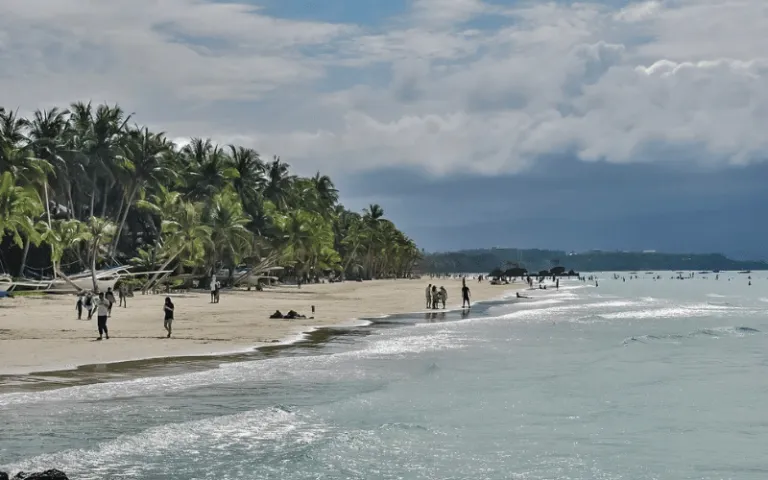Our favourite places to stay on this sleepy Cebu island.
15 Different Ways to Say ‘Merry Christmas’ in the Philippines

How do you say “Merry Christmas” in Tagalog?
If you’re a native Tagalog speaker, then you probably know the greeting directly translates to “Maligayang Pasko.” Did you know that “Maligayang Pasko” is not just considered a Tagalog translation of Merry Christmas, but also Sambal? Did you know that the Tagalog word Pasko is derived from the Spanish word Pascua, derived from the Hebrew word Pesach, referring to the Jewish Passover? At least, this is what some language scholars stand behind.
The point is that there is more to language than a bunch of letters. Each word can, in fact, guide us to understand the history, culture, and community of a certain destination. When we look at the different languages in the Philippines, we can only find proof that the country is, indeed, a melting pot of cultures. Interestingly enough, most of our diverse nation share several Christmas traditions, but how to say “Merry Christmas” varies depending on where we are in the Philippines.
Whether you desire to expand your knowledge of Filipino culture or want to discover a local language for your domestic holiday trip, feel free to bookmark this list. There are just so many different ways to say “Merry Christmas” in the Philippines!
Also read: Pinoy Polyglots and Linguaphiles on How to Learn a New Language
How to say “Merry Christmas” in the Philippines
“Maligayang Pasko!” — Tagalog

As the basis of the official Filipino language, Tagalog is the most widely spoken in the Philippines. So, most Filipinos would understand what “Maligayang Pasko” means.
Aside from this, several provinces are also naturally Tagalog-speaking. To be specific, these are Aurora, Bataan, Bulacan, Nueva Ecija, Zambales, Metro Manila, Batangas, Cavite, Laguna, Rizal, Quezon, Marinduque, Occidental Mindoro, Oriental Mindoro, Romblon, Palawan, Camarines Norte, Camarines Sur, and Maguindanao.
“Malipayong Pasko!” — Cebuano
Cebuano, also known as Sugbuhanon, is the official language of people from Cebu. Some locals, especially those who are not from Cebu, would rather call the language Bisaya, a term that refers to those from the Visayas and the non-Muslim population of Mindanao.
Considering that Cebuano is the second most common language in the country, then “Malipayong Pasko” is a good greeting to remember if you want to learn how to say “Merry Christmas” in another native language in the Philippines.
“Malipajong Pasko!” — Boholano
People from the island of Bohol mainly speak Boholano. Some linguists argue that Boholano is a dialect of Cebuano, while others stand firm that it is a separate language altogether. Regardless, Boholano sounds almost like Cebuano, save for their minor phonetic changes. In some cases, Boholanos pronounce the Cebuano “y,” “k,” and “i” sounds as “j,” “h,” and “w” respectively; so they say “Malipayong Pasko!” as “Malipajong Pasko!”
“Maugmang Kapaskuhan!” — Bikolano
When you find yourself in the Bicol Peninsula, Catanduanes, or Burias in Masbate, you will hear most locals speak in Bicolano. Within the province, there are more dialects to learn. But Naga City, Camarines Norte and Sur, Albay, and Northern Sorsogon mostly speak Standard Bicol. Most Bicolanos understand the standardised dialect as well, as this is considered their regional lingua franca.
“Malipayon nga Pascua!” — Hiligaynon/Ilonggo
One of the most common languages in the Visayas, Hiligaynon or Ilonggo is mostly spoken in Western Visayas — Iloilo, Capiz, Guimaras, Negros Occidental, Antique, and Aklan. In Mindanao, those from South Cotabato, Sultan Kudarat, and North Cotabato speak this as well.
“Naimbag a Pascua!” — Ilokano

People from the northern Philippines primarily speak Ilokano, which is considered the third most widely spoken local language in the Philippines. After all, the area covers large provinces, including the Ilocos region (Ilocos Norte, Ilocos Sur, La Union and Pangasinan), the Babuyan Islands, Cagayan Valley, and the Cordillera Administrative Region (Abra, Apayao, Benguet, Ifugao, Kalinga, Mountain Province and Apayao). The language is believed to resemble the languages of Balangao and Bontoc in the Mountain Province, as well.
Besides those from the northern Philippines, some Mindanaoans from the Soccsksargen region also speak Ilokano. And, fun fact, it is also the third most spoken non-English language in Hawaii!
“Malugud Pascu!” — Kapampangan
One of the major languages in the Philippines, Kapampangan is the main language of Pampanga and southern Tarlac, specifically: Bamban, Capas, Concepcion, San Jose, Gerona, La Paz, Victoria and Tarlac City. Some residents in Bataan, Bulacan, Nueva Ecija, Zambales, and General Santos in South Cotabato also speak this as their native language.
“Maabig ya Pasko!” — Pangasinense
In Pangasinan, locals speak Pangasinense. But some people hailing from Benguet, La Union, Nueva Ecija, Tarlac, Zambales, and Nueva Vizcaya also know the language. Linguists say that Pangasinense is a close relative of the Ibaloi language, the native language of Benguet.
“Maupay na Pasko!” — Waray
A native language in Samar, eastern Leyte, and the Biliran islands, Waray — also known as Waray-Waray or Samaran — is the fifth most spoken local language in the Philippines. Aside from the Waray people, those from Capul, Northern Samar, and Southern Leyte also typically speak this.
“Malipayon nga Paskwa!” — Aklanon

Heading to Boracay this Christmas? Then it would be convenient to know how to say “Merry Christmas” in one of the most famous destinations in the Philippines. While most locals know how to speak English and Tagalog well, their native language is Aklanon, the mother tongue of people from Aklan.
Aklanon is mostly known for its close-mid back rounded vowels, a significant feature compared to other Bisayan languages. For instance, some locals would call “Aklanon” as “Inakeanon.”
“Feliz Navidad!” — Chabacano-Caviteno
You might have not considered learning “Feliz Navidad!” as a way of saying “Merry Christmas” in the Philippines. But, in fact, many residents of Cavite use this term to greet one another. A Spanish-based creole language, Chabacano is mostly spoken in Zamboanga City, Cavite City, and Ternate. It is the only Spanish-based creole in the Philippines.
As with most languages, the way of speaking Chabacano also varies depending on the location. In Cavite, the Spanish-inspired terms and grammar are believed to be more evident. Thus, the use of the Spanish phrase “Feliz Navidad!” for Christmas.
“Felices Pascua!” — Chabacano-Zamboangueno
Known as Asia’s Latin Town, Zamboanga carries strong roots of Spanish culture, which shows to be very obvious in their language. During the Christmas season, people from Zamboanga greet one another with “Felices Pascua!” In Spanish, this literally translates to “Happy Easter.”
“Mepiya Pagasaulog!” — Manobo
There are several Manobo languages, as native speakers hail from huge areas of Northern Mindanao, Soccsksargen, and Caraga regions. While the standard Christmas greeting of the Manobos is “Mepiya Pagasaulog,” some people from the provinces of northern Compostela Valley, Davao Oriental, and Davao del Norte Province say “Marayaw na Pasko!” — a Dibabawon Manobo variant of the greeting — instead.
“Madyaw na Pasko!” — Mansaka
Found in Davao del Norte and the Compostela Valley, the Mansaka ethnic group share a language of the same name.
Also read: 13 Easy Tips To Conquer The Language Barrier Abroad
Isn’t it fascinating how there are so many ways to say “Merry Christmas” in the Philippines? Regardless of where you come from, we wish you the happiest holidays ahead!
Featured image credit: DinoGeromella via Canva Pro
Published at
About Author
Danielle Uy
Subscribe our Newsletter
Get our weekly tips and travel news!
Recommended Articles
10 Bantayan Island Resorts, Hotels, and Rentals for Your Tropical Escape 10 Best Mountain Cafes in the Philippines for Your Peak Coffee Experience Coffee date on the mountains, anyone?
10 Fairytale Castles In Europe Filipinos Need To See! Permission to feel like royalty even for a day?!
10 Instagrammable Laguna Restaurants and Cafes You’ll Love Elevate your Insta-game at these Laguna spots.
10 Pristine Beaches in Batangas for a Relaxing Tropical Break All within arm’s reach of Manila!
Latest Articles
Dingalan Travel Guide: Nature Spots to Discover Now Underrated coastal gem in Aurora
What to Eat in Bicol: Iconic Dishes and Treats, and Unique Pasalubong You’ll Love Spice up your foodie adventure with iconic Bicol dishes and must-try pasalubong!
Top Travel Trends in the Philippines for 2025 New spots, tips, and trends
New UK Adventure Park to Visit in Devon and Cornwall Fun countryside escape near London
Ultimate Camarines Norte Travel Guide: Waterfalls, Beaches, and More From surfing to secret waterfalls, Camarines Norte is your next escape!

